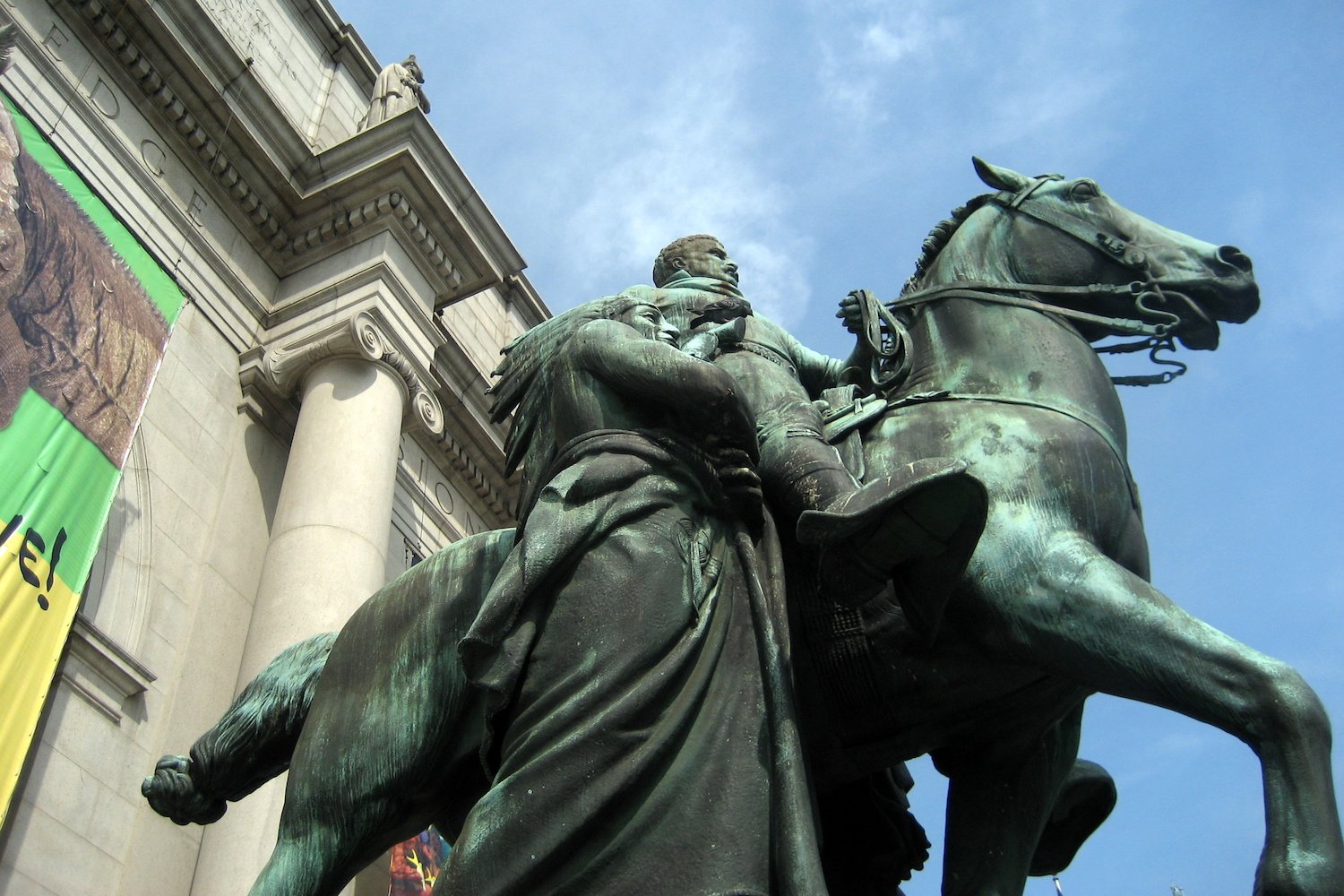
A monument to Theodore Roosevelt that has stood outside New York’s American Museum of Natural History since 1940 will be removed, the museum announced Sunday, after weeks of protests targeting Confederate monuments and other symbols of America’s racist history.
The bronze statue, situated on the steps of the museum, depicts the former New York state governor and US president on horseback with a Native American man in full headdress on one side and a bare-chested African man on the other. The work, by artist James Earle Fraser, was commissioned in 1925 as part of a larger initiative to honor Roosevelt, who was a naturalist and author of natural history works.
The statue sits on city-owned property and, in a press release, New York City Mayor Bill de Blasio said, “The city supports the museum’s request. It is the right decision and the right time to remove this problematic statue.”
That sentiment was echoed by Theodore Roosevelt IV, a great-grandson of the former president and a museum trustee, who said: “The world does not need statues, relics of another age, that reflect neither the values of the person they intend to honor nor the values of equality and justice. The composition of the Equestrian Statue does not reflect Theodore Roosevelt’s legacy. It is time to move the statue and move forward.”
The decision to actually remove the monument was a long time coming. In 2017, following the deadly white supremacist rallies in Charlottesville, Virginia, de Blasio convened the Mayoral Advisory Commission on City Art, Monuments, and Markers to address the future of divisive statues of Christopher Columbus, J. Marion Sims, and Roosevelt. In the end, the commission opted not to remove any of the works permanently. De Blasio said at the time, “Our approach will focus on adding detail and nuance to—instead of removing entirely—the representations of these histories.”
In the wake of those instructions, the American Museum of Natural History mounted an exhibition called “Addressing the Statue” that included studies of the preparatory sketches, and a series of responses from academics about Roosevelt’s legacy. Notably, many of the historians who contributed thoughts acknowledged that while Roosevelt was considered a conservationist, the land he was so intent on caring for had been stolen from Native American peoples. In its press release, the museum noted the shortcomings of the exhibition: “we are proud of that work…but in the current moment, it is abundantly clear that this approach is not sufficient.”
A coalition of artists and activists shrouding Equestrian Statue of Theodore Roosevelt outside the American Museum of Natural History. Image: Ben Davis.
In recent years, many groups have actively opposed the statue, staging protests outside the museum. Since 2016, Decolonize This Place has led a march on Indigenous People’s Day culminating at the Roosevelt statue and shrouding it in a tarp. In October 2017, a group called the Monument Removal Brigade splashed red paint on its base, writing in a statement “Now the statue is bleeding. We did not make it bleed. It is bloody at its very foundation.” Though the incident was a self-described “act of applied art criticism,” it was decried by then city cultural affairs commissioner Tom Finkelpearl as vandalism.
The future of the statue is unclear as yet, though the museum announced that its Hall of Biodiversity will be named for Roosevelt as a conciliatory measure. Over the past weeks, activists around the US have continued to rally for the removal of controversial statues, successfully toppling Confederate monuments in Raleigh and Los Angeles. NFL teams are also reckoning with statues honoring former team owners with racist pasts that are stationed outside stadiums in Minneapolis and Washington, DC.